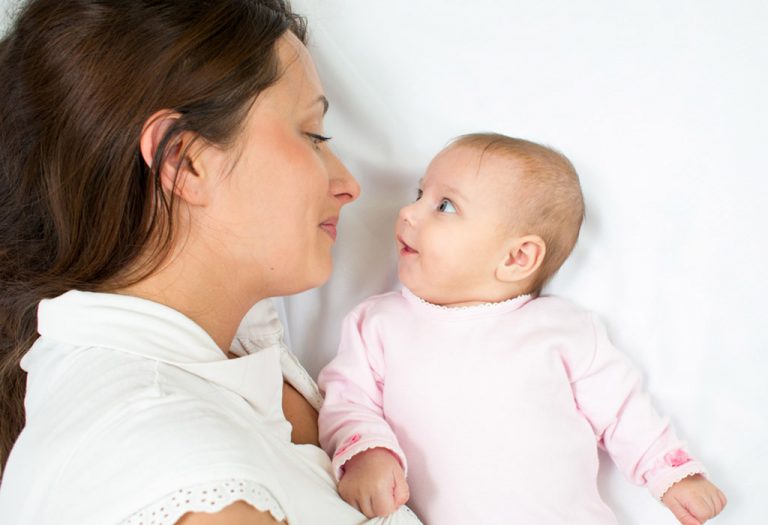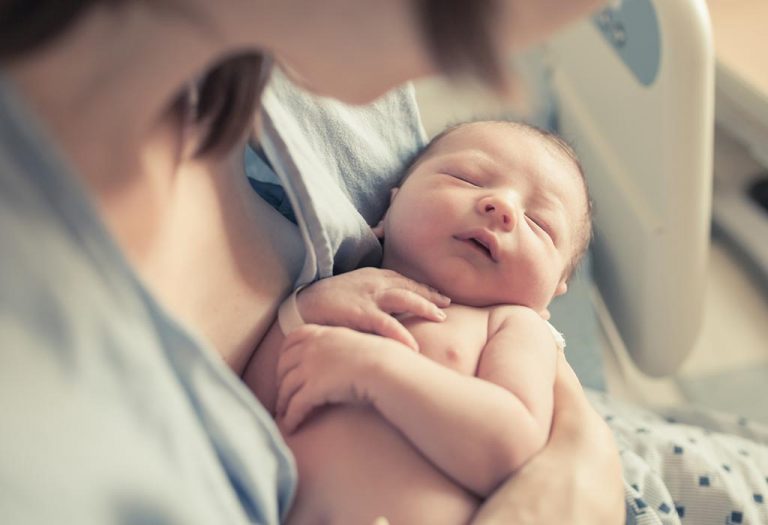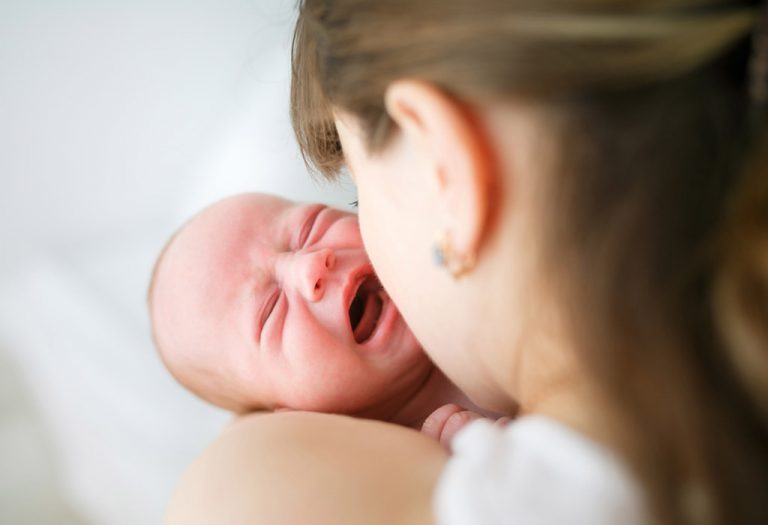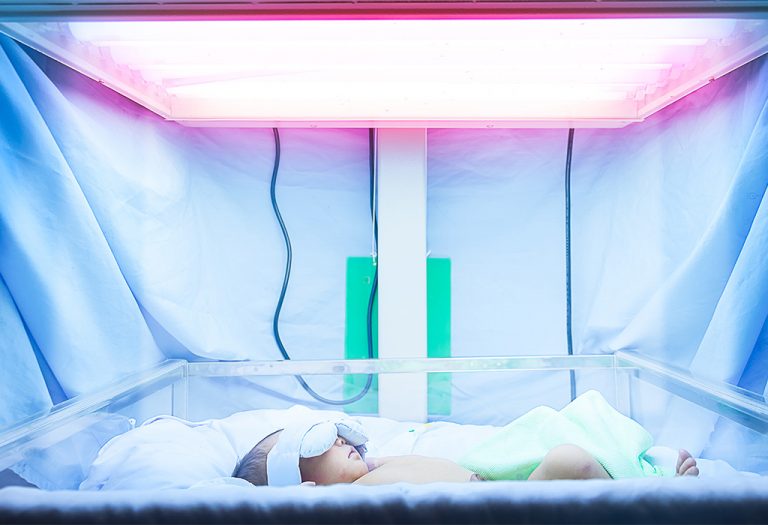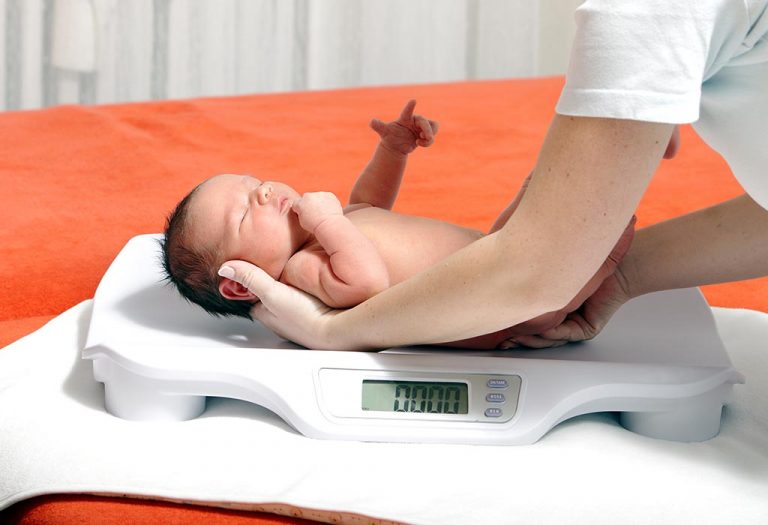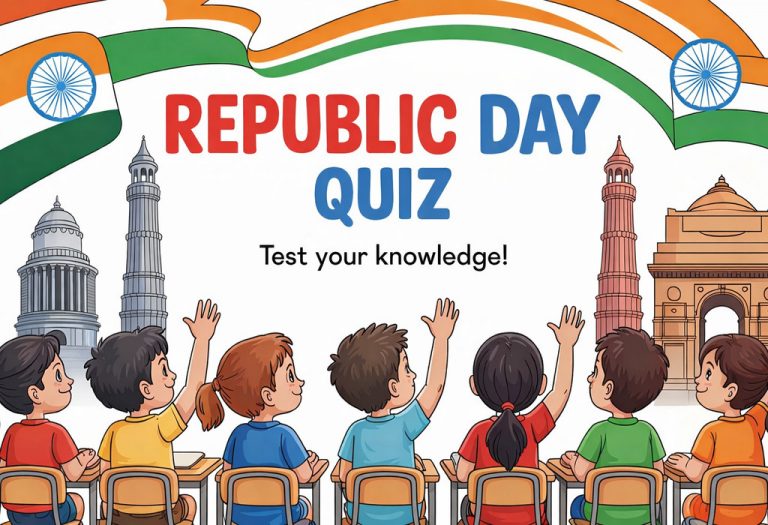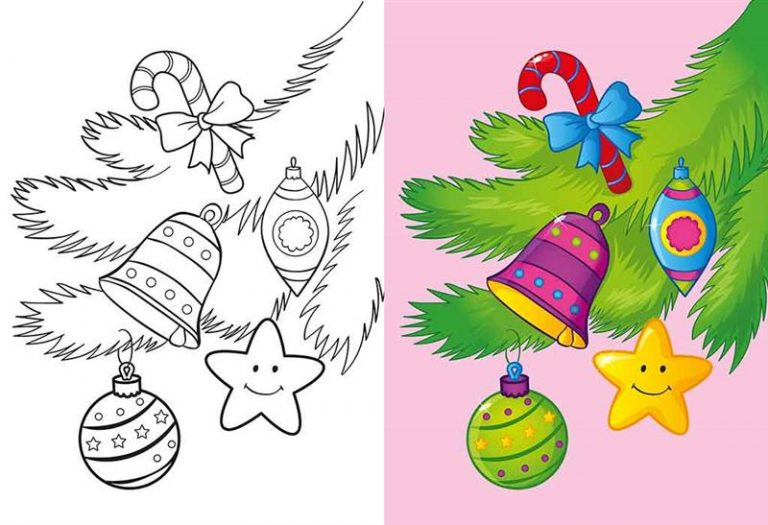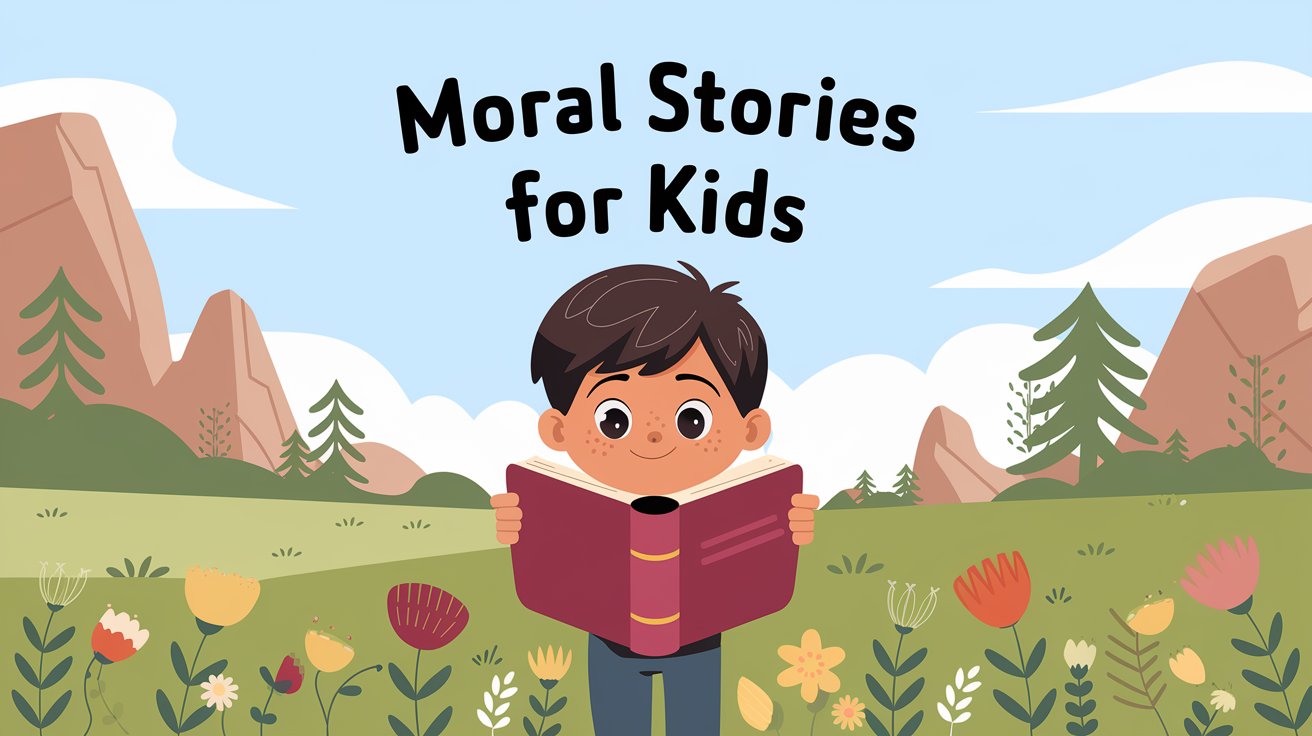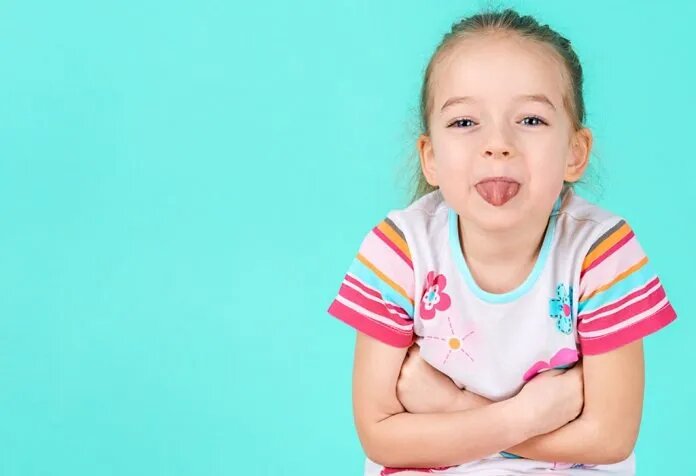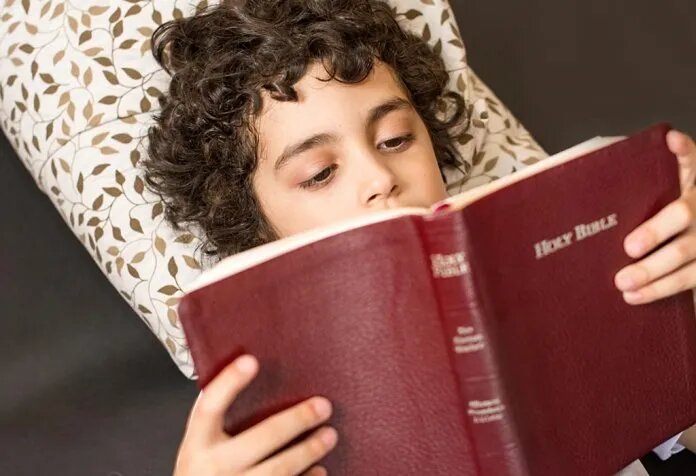When Can Newborn Babies See – Vision Development Stages

- When Do Babies Start to See?
- When Do Babies See Colour?
- When Can Babies See Clearly?
- Stages of Vision Development in Babies
- Signs of Baby’s Eyesight Problems
- Premature Baby Eyesight Development
- Tips to Improve Newborn’s Eyesight
- When Should You Call the Doctor?
- FAQs
Watching your little munchkin explore the outside world with their eyes as their vision develops and they start learning about colours and perspectives is exciting. As a new mommy, you may wonder what your baby can see. Well! The answer is- not much! During the first six months of life, babies begin to see the world in living colour with unclear vision. But by the time your baby is ready to blow off the first birthday candle, your baby will be able to see more clearly. So, when can babies see clearly? In the following article, we’ll learn all about how your newborn baby sees and the various vision development stages.
When Do Babies Start to See?
Your baby can see soon after birth, but the vision is not clear. Your baby’s eyesight will make gradual progress in the first year after birth. You may notice that your baby may get more attracted to highly contrasting colours, but the ability to interpret and process various colours is not fully developed. Infants start seeing colours first, and then comes the sharpness. While vision is present at birth, your baby’s brain cannot handle such complicated information at this stage. Their eyes are also sensitive to bright light. This means they are more likely to open their eyes when it is low light. The development of a newborn baby’s vision starts somewhere around 20/400, and it may become 20/20 by the time your baby is three to five years old.
Newborn babies are nearsighted, and they see things best from 8 to 12 inches away. This is a perfect distance for gazing up at mom, dad, and other caregivers. Any father than that becomes blurry (1).
When Do Babies See Colour?
Your newborn’s eyesight is not developed enough to differentiate between various colours. You may have to wait a little longer for your baby to develop that skill; however, you may notice that your baby reacts or responds to high-contrast, black and white toys or objects. Within a few weeks after birth, your baby’s vision will strengthen, and he/she will be able to see different colours and shades, including white, black or grey, and possibly some bright colours (2). It is also observed that young babies (three months and above) respond well to green, red, yellow and blue colours. By the time your baby touches the five-month benchmark, he/she will have better-coloured vision.
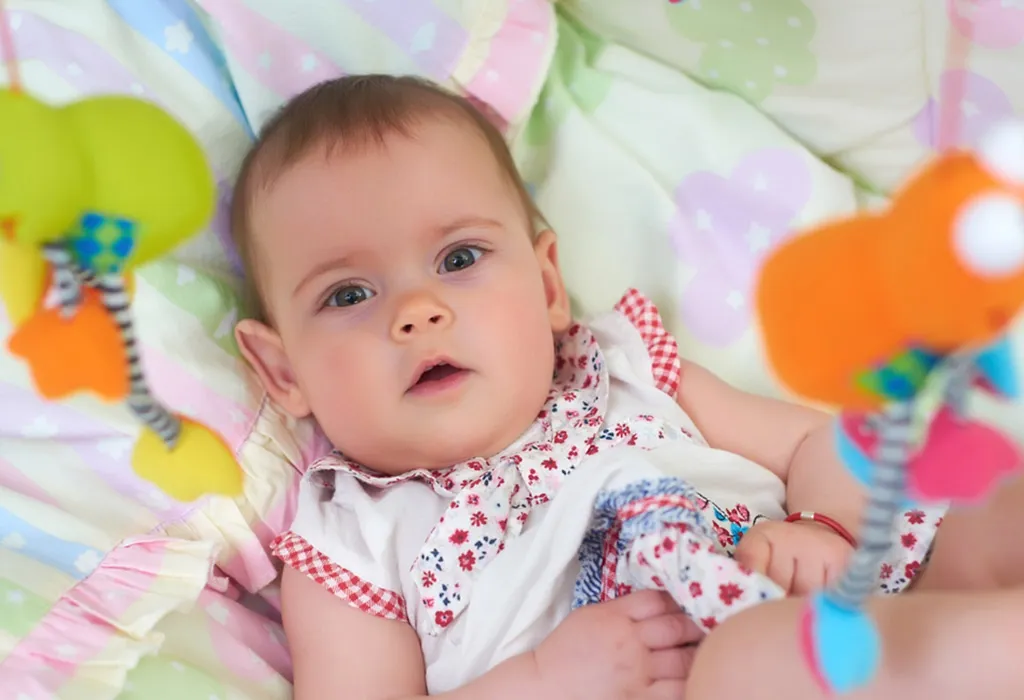
When Can Babies See Clearly?
If you are looking for an answer to the popular question, “At what age do babies see clearly?” you are at the right place. Newborns start to see clearly by about 6 months of age. The eyesight continues to develop through childhood. Many young kids are somewhat far-sighted, but this condition typically gets better as they grow older. By the age of 2, hand-eye coordination and depth perception are usually well developed. This helps to clarify why toddlers are constantly active and eager to discover their environment.
Stages of Vision Development in Babies
The development of vision in your baby is gradual, and it is divided into the following stages (3):
1. Newborn baby’s eyesight at birth
- Your newborn baby can focus on objects that are approximately eight to ten inches away from the eyes. But at this stage, your baby will not be able to move their eyes from one object to another.
- At birth, the nerve cells of your baby’s brain and eyes are yet to develop, and your baby is only able to see things which are white, black or grey.
- Newborn babies have a refractive error in their eyes (4). However, this gets rectified on its own as your baby grows. As your baby’s retina develops, you may notice your baby closing and blinking eyes when exposed to brighter lights.
- Your doctor will examine your newborn baby to see any signs of congenital disorders. Your doctor may even prescribe eye drops for your baby’s eyes to ward off any eye infections.
2. Birth – 2 months
- Your baby’s brain is unable to process the visual images. Therefore, when you look or smile at your baby, your baby will give you blank expressions. By the time they are two months old, they’ll be able to reciprocate.
- Your baby at this stage will have foggy eyesight. To grab your baby’s attention, you will have to use bigger and vibrant-coloured objects.
- A few weeks after birth, you will find that your baby’s eyes remain open for longer durations. This is because the pupil is developing and allowing more light to enter.
- Your baby is likely to differentiate between primary colours such as blue, red and green. But your baby’s vision is still not strong enough to figure out differences between colours which are close to each other, like red and orange.
- Your baby will have good peripheral vision, which means your baby will be able to focus on things which are two to three feet away from your baby’s eyes.
- You may notice your baby making funny eye movements (crossing or squinting eyes), which is very normal. Your baby is learning to focus.
3. 2 – 4 months
- By this time, your baby can see and differentiate between colours. This means your baby’s world is becoming more colourful.
- Your baby can focus on objects, and if you move or shift an object that is nearby to your baby, your baby’s eyes will move along with it. Your baby’s tracking skills are developing during this age bracket.
- Your baby’s eyes and brain will have better coordination. This will help in gaining depth perception, which means your baby will be able to establish how near or far various objects are.
- Towards the end of the fourth month, your baby will have a better vision of distant objects. If you place your baby in front of a window, your baby will look beyond the glass pane.
4. 4 – 8 months
- By the time your baby is five months old, they will have robust-coloured vision.
- Your baby will remember familiar objects and faces and will react to them. During this time frame, your baby’s object familiarity and depth perception will develop further.
- Towards the end of the eighth month, you will notice your baby’s vision is more like an adult’s. If you try to move or remove things in front of your baby, your baby will register it. This is called object permanence (5).
5. 9 – 12 months
- The colour of your baby’s eyes will remain the way it is at this stage, for the rest of his/her life.
- Your baby’s vision is almost like an adult’s, which means that your baby has well-developed depth perception and colour vision.
- Your baby will have better eye and muscle coordination by this time. Though the muscle movements by this age will not be that sturdy, your baby will have a well-developed vision.
- By the time your baby is one year old, their vision is as good as an adult’s vision. Your baby can recognise familiar objects and faces, differentiate between colours, see distant objects and can also notice nearer and farther objects.
6. One to two years old
- During this stage, your baby will develop better eye-hand coordination. Along with this, your baby’s depth perception will improve further.
- Around this age, your baby will become a little explorer, wanting to see and touch any object that looks interesting. Your baby will also look and listen to you carefully.

Your doctor may guide you through various stages of the baby’s eyesight development. If you notice anything unusual regarding your baby’s eyesight or vision, you should seek immediate medical help.
Signs of Baby’s Eyesight Problems
Your baby’s eyesight starts to develop soon after birth. Therefore, you need to be careful at every stage. The following may be some of the signs of vision problems in babies:
- If your baby is not focusing: In case your baby is not able to focus by the time your he/she is four months old, and your baby’s eyes keep wandering, you should get in touch with your doctor.
- If your baby shuts their eyes too often: You may notice that your baby is closing their eyes to brighter lights or whenever you step out in the sun, your baby may have issues related to the retina or eye pressure.
- If your baby’s pupils appear white: If you notice any white spots in your baby’s pupils, you should seek medical help. The appearance of white spots could be a sign of a severe eye problem (cataract, cancer or other serious conditions).
- If your baby’s eyes are often tearing : You may notice your baby’s eyes are wet and teary most of the time. This may happen due to blocked tear ducts. Your doctor will guide you on how to manage this condition.
- If your baby’s eyes are red or swollen: Your baby’s eyes may become red or swollen; this condition is indicative of an infection. You should get medical help.
Whenever you notice any of the problems mentioned earlier, it is advised to get in touch with your baby’s doctor. Timely medical intervention can ward off significant complications.
Premature Baby Eyesight Development
Babies who are born preterm or are premature babies do not have well-developed organs, and the same applies to their eyes. The preterm babies have slower visual development in comparison to full-term babies. A premature baby is at a higher risk of having eyesight complications or problems, such as retinopathy. This condition may damage the retina of a premature baby. This condition may result from the overuse of oxygen for premature babies because of underdeveloped lungs. More oxygen disrupts the development of blood vessels that supply blood to the retina. Though this condition can lead to severe complications, with timely medical intervention, medication and care, it can be treated.
Proper care of a premature baby’s eyes will help in healthy eyesight development without any complications.
Tips to Improve Newborn’s Eyesight
The following tips may prove to be beneficial in improving your baby’s eyesight during various stages:
1. Birth – 2 months (6)
- You should refrain from exposing your baby to brighter lights. It is recommended to put dim lights in your baby’s room.
- You should make use of high contrast objects and toys for your baby. Do not place them too close or too far from your baby. Place them around eight to ten inches away from your baby.
- You should make eye contact while breastfeeding and make sure you breastfeed from both breasts so that your baby can see you through both eyes.
- You may play a staring game with your baby. Place your baby seven to eight inches away from you, and when your baby is looking at you, slowly move from one side to another. This is one of the best exercises for your baby’s eyes.
- By the time your baby turns two months, you should make eye contact with your baby. Try to talk and smile; this will help your baby to practice eye focus and also help them reciprocate (7).
2. 2 to 4 Months Old Baby
- At this stage, your baby’s colour vision is at a developmental stage. It will be a good idea to introduce colourful toys and objects to your baby.
- Making or buying a baby gym that has dangling colourful toys will help your baby learn eye control.
3. 4 to 8 Months Old Baby

- You may give colourful blocks or other bright objects to your baby to play with.
- To stimulate a visual response, you may play hide-and-seek games with your baby.
- Your baby will be attracted to vibrant patterns and colours. Therefore, it will be a good idea to grab your baby’s visual attention by giving toys in bright colours.
4. 9 to 12 Months Old Baby
- Introduce the baby to a game of Hide and Seek. You could even use some of the baby’s toys to make the activity fun.
- Crawling helps the baby develop coordination. Encourage activities where the child needs to crawl, rather than walk.
- Toys which can be stacked and taken apart help develop visual memory.
- Watching older siblings or friends playing encourages the baby to imitate them and improve vision.
When Should You Call the Doctor?
It is recommended that you take your baby for regular eye check-ups, as regular monitoring reduces the chances of complications that may arise due to neglect or late detection. The following are some of the conditions that may require immediate or timely medical intervention:
- Lazy eye or amblyopia: Lazy eye or amblyopia is a condition that occurs when the eyesight of one of the eyes is lost due to restricted or a lack of usage. This syndrome may arise because of various reasons, such as a crossed eye or a lack of eye-brain coordination. This condition can get tricky as it becomes difficult to detect this problem, and there are no warning signs (8). However, regular eye check-ups will ensure timely diagnosis and treatment.
- Blocked tear ducts: Blocked tear ducts are a pervasive problem in infants. This condition may make the baby’s eyes red and swollen. This condition requires immediate medical help because your baby’s immune system is not fully developed, and blocked tear ducts are the perfect place for bacteria to breed (9). Your doctor may prescribe antibiotics to control the infection.
- Cataracts in babies: Sometimes babies are born with cloudiness in the lens of the eye. This rare condition is known as a cataract. However, this condition may be noted immediately after birth or later during pediatric visits. Your doctor may advise surgery to cure this eye condition. The procedure followed for cataract surgery for babies is similar to that used for adults (10).
- Retinopathy: This eye condition occurs in babies who are born preterm or prematurely. The blood vessels that supply blood to the retina may get damaged due to the disrupted flow of oxygen. The doctor can figure out this condition during an ophthalmic examination (11).
- Squint or crossed eyes: Up till four months of age, your baby’s eyes may appear to wander independently or move without coordination, which is very normal. But if you notice that after five to six months or even later, your baby’s eyes are misaligned, then it could mean that your baby has strabismus. Strabismus is a condition in which your baby may have crossed or squinting eyes. If you notice this in your baby, you should get medical help (12).
- Ptosis: This is a problem of the eyelids, which may cause the eyelids to droop involuntarily. Some babies are born with this condition because of weak eyelid muscles. Though ptosis in itself may not cause any problem to the vision of a baby, it may lead to lazy eye syndrome or amblyopia, which may cause vision problems. A surgical procedure can rectify this condition in babies (13).
You should get in touch with your doctor if you have any concerns regarding the baby’s eyesight at one month or later stages.
FAQs
1. When do babies open their eyes?
Babies mostly open their eyes and start seeing within the first 20 minutes of birth.
2. What is one surprising fact about babies’ eyes?
One of the most exciting facts about babies’ eyes is that at birth, the size of a baby’s eyes is about 65% of their adult size. To ensure your little one’s eye health and the proper functioning of their reflexes, an initial eye examination will occur in the delivery room or nursery on the day of birth. Your paediatrician will keep evaluating and tracking your baby’s vision during every well visit.
3. When are babies able to see faces?
Babies can see faces early on in their infancy, as they are able to see around 10 inches away from the time of birth. However, their vision will be blurry and gradually improve.
4. When can babies focus on objects?
Babies are born with peripheral vision, which means they can see different objects around them that are at the sides of their visual field. But because their vision is still in process, they are not able to focus closely on an object, which takes some time to develop. By the time babies are one month old, they are able to briefly focus on objects as far as three feet away.
Around 2 to 3 months of age, your baby’s capacity to focus is likely improving consistently. They may be able to bring both eyes closer together, a process called convergence, to concentrate on nearby objects like their hands. At the same time, they will begin to move both eyes apart, known as divergence, to focus on distant items.
5. When can babies start tracking objects with their eyes?
By the end of 3 months of age, babies will be able to start following moving objects with their eyes, interested in checking out shapes and patterns, and spot familiar and new faces, even at a distance (4).
Eyes are one of the most delicate organs in your baby’s body. Therefore, it becomes essential to take care of them from birth. In case you notice anything abnormal or unusual with your baby’s eyes, you should take your baby to the doctor.
References/Resources:
1. Nemours KidsHealth – Your Newborn’s Hearing, Vision, and Other Senses
2. American Academy of Ophthalmology – Vision Development: Newborn to 12 Months
3. American Optometric Association – Infant Vision: Birth to 24 Months of Age
4. Nemours KidsHealth – Your Baby’s Hearing, Vision, and Other Senses: 1 Month
5. Nemours KidsHealth – Separation Anxiety
6. InfantSEE – Ways to Help Infant Vision Development
7. CDC – Important Milestones: Your Baby By Two Months
8. American Academy of Pediatrics – Warning Signs of Vision Problems in Infants & Children
9. American Academy of Ophthalmology – What Is a Blocked Tear Duct?
10. NHS – Treatment–Childhood cataracts
11. NIH – Retinopathy of Prematurity
12. Boston Children’s Hospital – Strabismus and Amblyopia
13. MedlinePlus – Ptosis – infants and children
Also Read:
Conjunctivitis in Babies
Why do Baby Stare at Me
When can Babies see Colour
When do Baby Start to Recognize
Was This Article Helpful?
Parenting is a huge responsibility, for you as a caregiver, but also for us as a parenting content platform. We understand that and take our responsibility of creating credible content seriously. FirstCry Parenting articles are written and published only after extensive research using factually sound references to deliver quality content that is accurate, validated by experts, and completely reliable. To understand how we go about creating content that is credible, read our editorial policy here.







